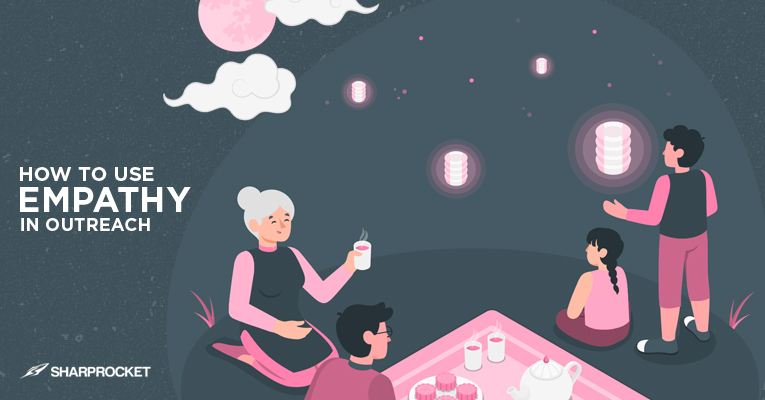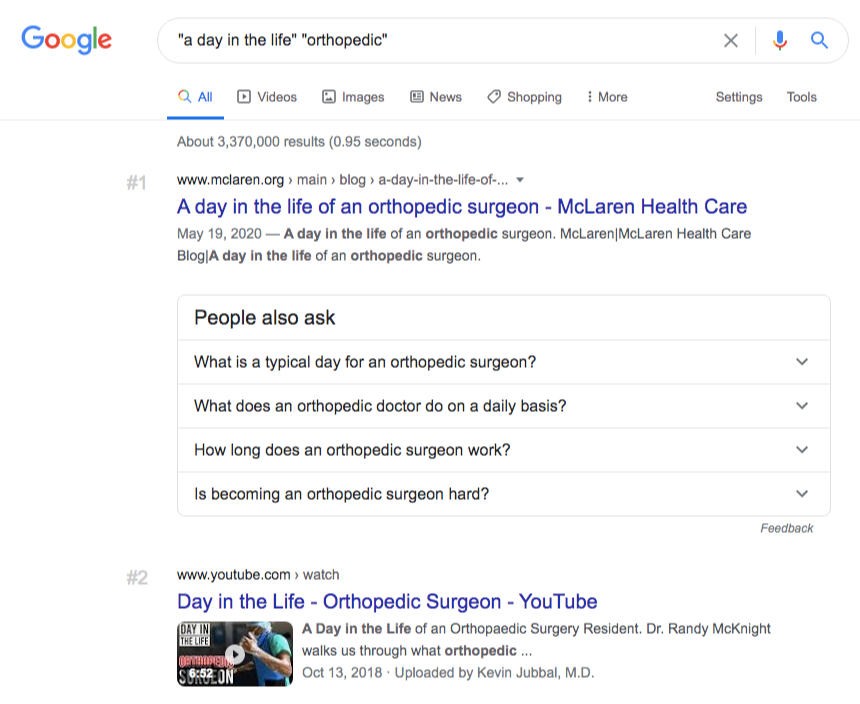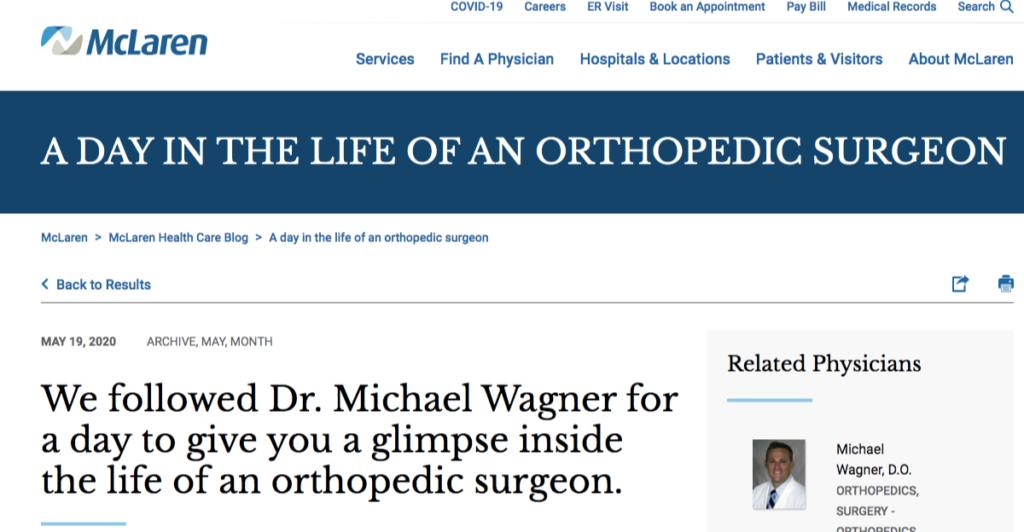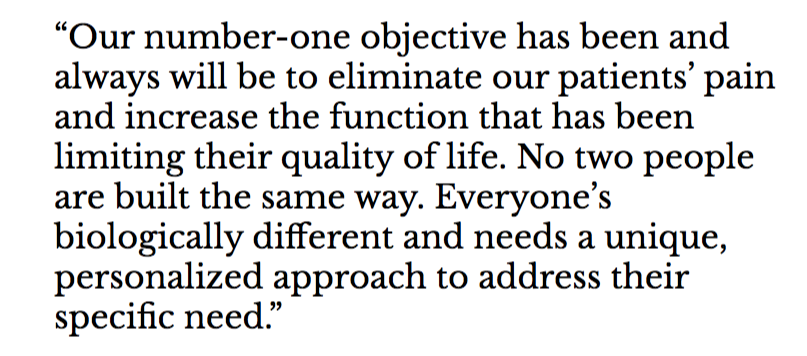by Venchito Tampon Jr | Last Updated on October 24, 2021
What if you can generate more links by getting into the skin of your link prospects?
That’s how empathy works, doesn’t it?
If you can use empathy in your outreach, you’ll increase your response and link conversion rates dramatically.
In this post, we’ll cover actionable tips to integrate empathy in your outreach copies.

Empathy in its original context is “in the skin” — which we derived this common knowledge of “putting yourself in the person’s place or shoes”.
How to Use Empathy in Outreach
The first tip to be more empathetic in outreach is:
1. Know what your audience’s day looks like
If you’re setting up an outreach campaign to a segmented audience (ethnos of people with the same interests, knowledge, or background), what you should be looking for are things that make them tick.
The way to do that is to understand their patterns of thinking and what they’re going through like a normal person.
How can you know what a person’s day looks like without having to face their experiences yourself?
The key is what I call, “a day in the life” hack.
The way to get started with this is to do a Google search for “a day in the life” + “audience”.

For example, you’re promoting an infographic to a group of parent bloggers. You can replace the search query with “parents” to see what does parents’ day looks like.
The less knowledgeable you are about a target group of people, the more effective this research hack is.
What if you’ll pitch to web designers? How about chiropractors?
The list goes on and on.
So if you’re an agency, you can literally utilize this “a day in the life” hack to know how your audience thinks and use it to craft a targeted email outreach with finesse.
Terminologies and lingos
When you do a research on the “day in the life” of “audience”, you’ll see different lingos and terminologies used by the person representing the group you’re targeting.
Get insights from the different videos, essay-like blog posts, and other content formats as these are words you can directly insert in your email copies.


Content promotion lines
Many marketers throw lines like, “this content can you help you out…”, “this useful content piece” or “interested in seeing this ultimate, great guide”. — without even describing how the audience would resonate with the content.
Your initial pitch can stand out among all promoters of similar content to a group of an audience when you know how to describe your offer in a way that touches the person’s day to day experiences.
2. Respect the prospect’s time
Have you ever received multiple repeated follow-up emails within a few days?
How does it feel?
Chances are, even if you want to, you won’t take the time to reply to the email anymore.
Follow-up emails should be done in a subtle and appropriate manner.
After no response, you should know how to send a follow-up email that is considerate to the person’s time.
Not every silent response means the person doesn’t care about your email. There are many various reasons why the person didn’t take the time to respond to you — it could be their day job, or as simple as they had just overlooked it.
Putting empathy into consideration here.
Have a proper interval of follow-up emails to ensure you’re not being overly aggressive, but at the same time, not missing out on the opportunity you couldn’t get a link from the conversation, due to lack of follow-up.
Here’s a good follow up email I sent to my leads that could be tweaked for link building outreach:
Hi [Name],
I haven’t heard back from you, and that tells me one of three things:
1) You’re not interested at this time, but we can work out something in the future.
2) You’re still interested, but haven’t had the time to get back to me yet.
3) You saw our content but you think it’s not fit to add to your page.
Please let me know which one it is, because I’m starting to worry. If you have other reasons, please let me know so I can stop bothering you.
Thanks and looking forward to hearing from you.
[Your Name]
3. Anticipate objections to solve problems beforehand
You can use sales psychology to determine what would be the possible objections of your link prospects, even before you actually pitch them.

By doing so, you’re now looking for elements to add to your email copy that makes it irresistible.
There are three objections that a person can have whether that is an offer or a link request.
Vehicle, internal, and external objections.
Vehicle objections are types of objections a person has on the platform, tool, product, or offer.
Link building-wise, your offer is your content asset.
You have to identify common objections with your content asset.
Here are some examples:
- Exclusivity of your content. If you’re doing digital PR, you want a few targeted local & national newspapers to cover your story or content before it actually goes out in public. If you could prove that your story is exclusively offered to them, you’re likely to have a chance of getting the exposure.
- Ready to publish content asset. If you’re distributing a blog post or an infographic to publishers, you would want to make it easily accessible or easy to find.
- Credibility of your content piece. If you’ve got early wins with media sites and top industry blogs, you could highlight it as part of your pitch — making your distributed content irresistible to be published on their blogs.
Internal objections are objections they have on themselves. This refers to their limiting beliefs that lead to not taking your favor.
External objections refer to any objections people have not using the vehicle (i.e. not using your content asset). This could be summarized as some sorts of “excuses”.
What are the excuses potential linkers for not giving you links?
One example in broken link building outreach is the inability of a person to find the broken link.
In this case, to remove the roadblock of that objection, in your conversation leading to link placement, give the person details of broken links (URLs and their anchor texts).
I’m happy to send them over. The ones I encountered were here ([Linking From]):
- [Broken Link #1]
- [Broken Link #2]
- [Broken Link #3]
Hope that helps. Also, is there any chance I could make a quick suggestion? *CRAFT CUSTOM FROM HERE*
Knowing the objections of your potential linkers beforehand leads to increasing the success rates of your outreach campaign.
Here are more useful resources on this subject of email outreach:
- Outreach Strategies During the Coronavirus
- Why and How Influencer Outreach Works
- What To Consider When Using Branded Email Addresses For Client Outreach?
- How to Use VoilaNorbert For Linker Outreach
Skin in the Game
If you put your skin in the game, you literally get your hands dirty. You have to know who your link prospects are as well as their needs to be able to serve them properly.
Comment down below if you have any additional insights or tips you’d like to share with our audience.
The Author
Venchito Tampon Jr
Venchito Tampon is a Filipino Motivational Speaker, Corporate Trainer, and a Leadership Speaker in the Philippines. He is the CEO and Co-Founder of SharpRocket, a link building agency. With a decade of experience, Venchito has a proven track record of leading hundreds of successful SEO (link builidng) campaigns across competitive industries like finance, B2B, legal, and SaaS. His expert advice as a link building expert has been featured in renowned publications such as Semrush, Ahrefs, Huffington Post and Forbes. He is also an international SEO spoken and has delivered talks in SEO Zraz, Asia Pacific Affiliate Summit in Singapore, and Search Marketing Summit in Sydney, Australia. Check out his other businesses, Hills & Valleys Cafe, Blend N Sips and Saas Pursuit.
How our LINK BUILDING AGENCY builds 250 links/mo consistently using Predictable Link Building Methodology™…
- Using a SIMPLE and PROVEN system
- Using a SCALABLE strategy
- No private blog networks
- No creepy outreach emails
